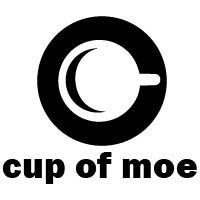We may earn money or products from the companies mentioned in this post.
 “Halloween” begins like the 1978 iteration, with young Michael Myers (Daeg Faerch) killing his sister Judith (Hanna R. Hall), her boyfriend Steve (Adam Weisman), and his mom’s ex-boyfriend Ronnie (William Forsythe). Unlike John Carpenter’s version, Zombie’s envisioning prods into the shaping of Michael Myers. While the original features a purely evil entity who simply kills, the reboot portrays Myers as an abused kid: his mom (Sheri Moon Zombie) is a stripper, and he’s abused by his mother’s boyfriend.As in the original “Halloween,” psychologist Dr. Samuel Loomis (Malcolm McDowell) treats Myers, who dons masks and becomes increasingly introverted. Myers escapes Smith’s Grove Sanitarium, returning to his hometown Haddonfield, Illinois. Here he embarks on his stalking of Laurie Strode (Scout Taylor-Compton), and her teenage friends Lynda Van Der Klok (Kristina Klebe) and Annie Brackett (Danielle Harris).
“Halloween” begins like the 1978 iteration, with young Michael Myers (Daeg Faerch) killing his sister Judith (Hanna R. Hall), her boyfriend Steve (Adam Weisman), and his mom’s ex-boyfriend Ronnie (William Forsythe). Unlike John Carpenter’s version, Zombie’s envisioning prods into the shaping of Michael Myers. While the original features a purely evil entity who simply kills, the reboot portrays Myers as an abused kid: his mom (Sheri Moon Zombie) is a stripper, and he’s abused by his mother’s boyfriend.As in the original “Halloween,” psychologist Dr. Samuel Loomis (Malcolm McDowell) treats Myers, who dons masks and becomes increasingly introverted. Myers escapes Smith’s Grove Sanitarium, returning to his hometown Haddonfield, Illinois. Here he embarks on his stalking of Laurie Strode (Scout Taylor-Compton), and her teenage friends Lynda Van Der Klok (Kristina Klebe) and Annie Brackett (Danielle Harris).
While following generally the same premise of John Carpenter’s concoction, Zombie’s departures establish a distinct twist on Michael Myers lore. Primarily, Zombie accomplishes this through deeply characterizing Myers’ evolution from innocent child to 10 year old murderer. In doing so, he morphs Myers from embodiment of evil to humanized product of his environment. The audience even sympathizes with him. It’s this realism that makes Zombie’s interpretation so haunting. Yes, it’s graphic, notably the blood-soaked finale, but the psychology scenes are arguably more frightening than the copious guts splattered about.
Loomis’ depiction further distinguishes Rob Zombie’s “Halloween” from John Carpenter’s vision. The 1978 version featured the memorable Donald Pleasence as the good-natured, though seasoned, psychiatrist Loomis. McDowell’s Loomis is a money hungry sellout, more focused on media attention and a book deal than catching Myers. It’s a radical departure, but is helps foster the notion that this isn’t a remake so much as an inspired reboot.
Zombie’s re-imagining, for all its individuality, pays homage to John Carpenter’s original. The setting feels very 70’s, with a retro soundtrack including Bachman Turner Overdrive’s “Let it Ride,” the Misfits’ “Halloween II,” and “Mr. Sandman,” the latter of which is a throwback to “Halloween II” and “Halloween H20.” Even the film itself retains a grainy quality which invokes the spirit of the slasher greats that spurned the genre. Rob Zombie’s “Halloween” isn’t for the faint of heart, or the squeamish, but fans of the Michael Myers and the “Halloween” series, as well as horror aficionados, will appreciate the stylized vision Zombie lends to the franchise.
This post may contain affiliate links. We are a participant in affiliate programs such as the Amazon Services LLC Associates Program, an affiliate advertising program designed to provide a means for us to earn fees by linking to Amazon.com and affiliated sites. However, all products are thoroughly tested and reviews are honest and unbiased.
